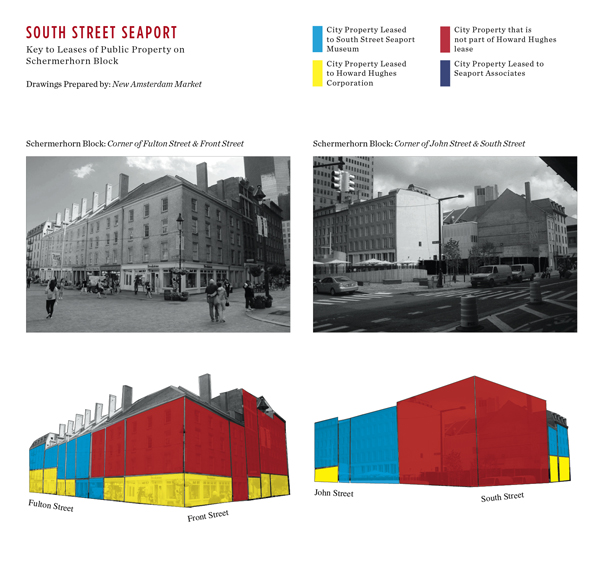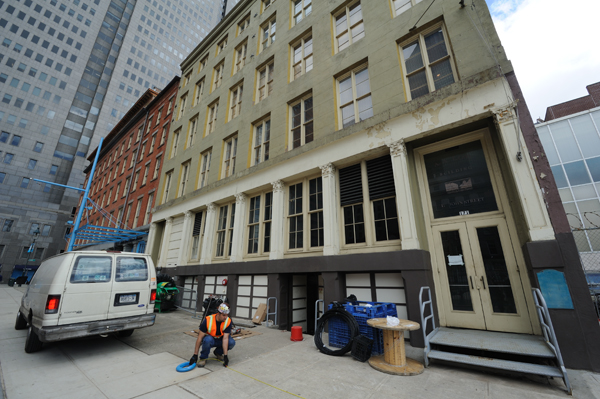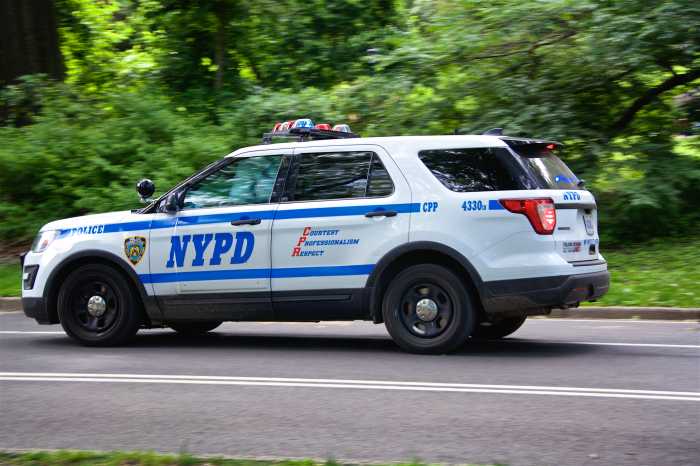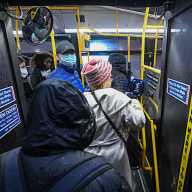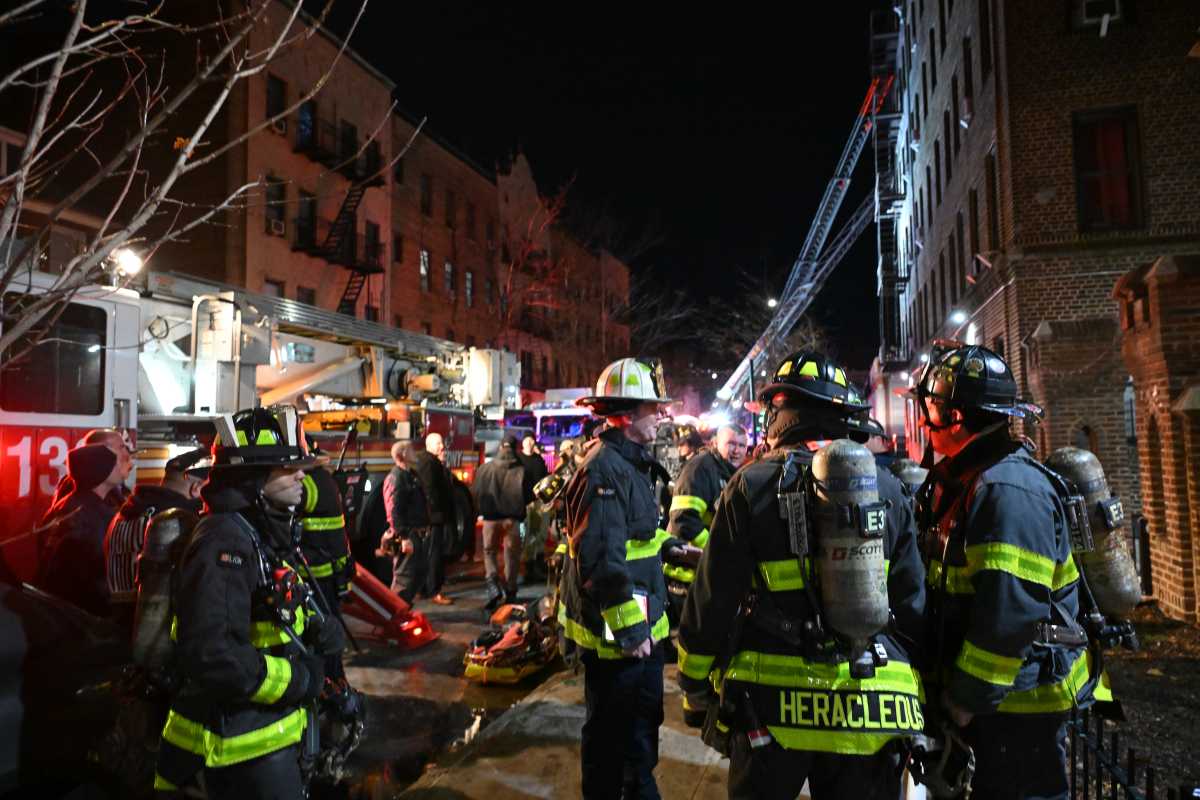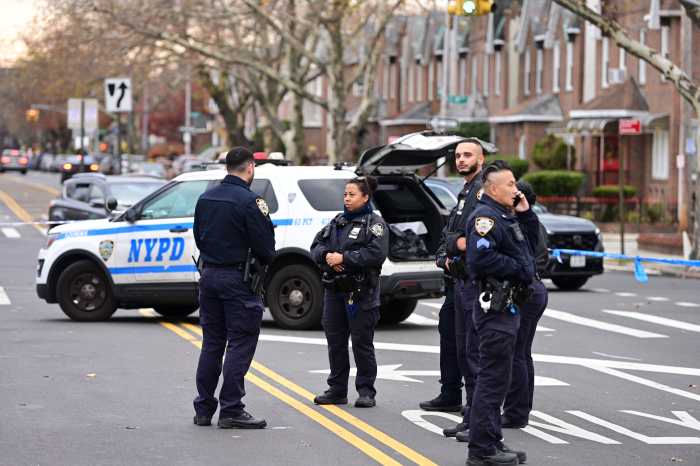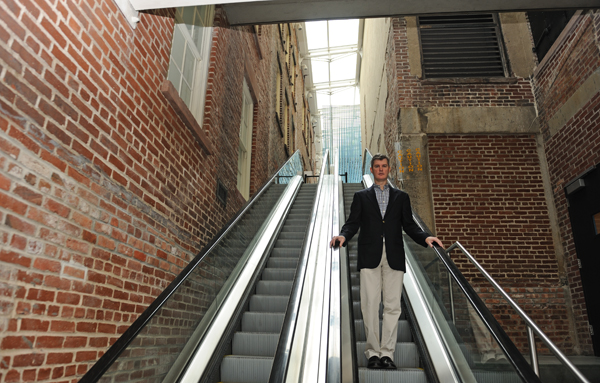
By TERESE LOEB KREUZER
Chris Curry, senior executive vice president of The Howard Hughes Corp., was skeptical. Jerry Gallagher, general manager of the South Street Seaport Museum had just told Community Board 1’s Seaport Committee that it would cost approximately $22 million to fix the museum’s Sandy-damaged electrical equipment, get its heating and cooling systems working again and repair the escalator in the 12 Fulton St. galleries and the elevators. The museum didn’t have the money.
“E.D.C.’s not doing that?” Curry asked — referring to the New York City Economic Development Corp., landlord for the South Street Seaport properties leased to Howard Hughes as well as to the museum.
“No,” Gallagher replied, “unless you know something I don’t know.”
Curry said the E.D.C. had asked Howard Hughes to return part of its space on the second level of the interconnected Schermerhorn Row buildings on Fulton Street in order to install an electrical room. “I thought it was an electrical room for the entire building,” Curry said.
“No,” said Gallagher. “That’s for the building separately – independent of the museum.”
It’s so complicated, Gallagher said, “that even E.D.C. gets confused. I’ve had to take numerous people from E.D.C. and show them the space.”
The museum had to close its Fulton St. galleries on April 7 because of the damaged heating and cooling systems. The galleries need to be maintained at a temperature of 70° and 50 percent relative humidity, 24 hours a day, every day of the year, regardless of the temperature outside.
What many people don’t realize, Gallagher said a few days after the April 16 Seaport Committee meeting, is that the South Street Seaport Museum, entered at 12 Fulton St., is actually two separate buildings. One of them faces Fulton St. and the other faces John St.
He was standing in the lobby connecting the two buildings, looking up at the glass-roofed atrium that spans them and at the escalators to the second floor, damaged by Superstorm Sandy. They have not worked since. Sandy’s surge deposited four feet of water in the middle of the lobby and even more on the Fulton St. side, where the lobby dips down.
However, the museum’s offices and collections were spared. The offices are on the second and fifth floors of the John St. building. The collection, amounting to around 20,000 objects, is housed on the third and fourth floors. It includes paintings, watercolors, ship models and more than 500 examples of scrimshaw, carved on animal bone by sailors during long voyages.
“Those spaces are served by a different heating and air conditioning system than the 12 Fulton St galleries,” Gallagher explained. “We were able to get heat in [the John Street building] during the winter by pumping some warm air from temporary heaters in the back of the building. For the summertime, we’ve been working with E.D.C. on getting power to those floors.”
The electrical systems on the collection storage side existed prior to renovations that took place around 10 years ago. “They’re interconnected with the systems for the rest of the building and the rest of the block,” Gallagher said. “That’s why E.D.C. had to undertake that repair.”
The gallery systems were modernized around 10 years ago and are completely separate from the systems on the John Street side.
Gallagher described both systems as being “old and on the temperamental side.” He said that when the museum’s previous administration had to close the museum in February 2011, they continued to maintain the John St. systems because that building housed the collections, but when the galleries were closed, it was economically not feasible for them to maintain the systems that serviced the galleries.
The Museum of the City of New York took over the management of the Seaport Museum in the fall of 2011 under an 18-month contract that has now been extended to July 5.
“When we arrived here in October 2011, we couldn’t start the systems up because the steam meter had been taken out,” Gallagher recalled. “And that happened because they were not able to pay their steam bill so Con Edison came in and took the steam meter out. It took us a while to get a steam meter reinstalled.”
Since Sandy, the elevator on the John St. side of the building hasn’t worked because its mechanism was submerged. “We’re trying to figure out who’s responsible for fixing that,” Gallagher said. “It would probably cost around $1 million to fix.”
The museum’s basement is a warren of pipes and wires. Electricians supplied and paid for by E.D.C. are working in part of it, but the rest — the part that services the museum’s galleries — has not been touched since Sandy.
“We’d like to get this equipment out of the basement to a higher floor,” Gallagher said. “We’re in a landfill area and a flood zone. Water has been down here before. Water was down here with Hurricane Sandy. It will probably be a short period of time before we have water down here again. It doesn’t make sense to repair this in place, and if we did repair this in place and FEMA [the Federal Emergency Management Agency] helped support it, no one would help us relocate it. So we have to do it once and do it right and try to get funding and support from FEMA.”
He said there was no room within the existing buildings to put the equipment. However, next to the museum on the John St. side is a small, empty lot, where a sliver building could be constructed. The Howard Hughes Corp. has an option to develop that lot as well as the museum premises themselves should the museum not use them for a period of six months.
The museum has a $500,000 policy with The Hartford insurance company to cover the museum spaces on Fulton and John Sts.
To date, the museum has collected $200,000 on its insurance policy, but Hartford has questioned whether E.D.C.’s policy overlaps with the museum’s.
“We’ve been working with E.D.C. and with the insurers to try to get all of that straightened out,” Gallagher said. “There’s so much damage down here, that there are plenty of things to submit claims for.”
On Water St., several of the museum’s properties are open and in use. Bowne Printers and Sal Polisi’s neighboring woodcarving studio are both functioning. Bowne & Co. Stationers at 211 Water St. closed for a short time for reorganization and repairs but is set to reopen. The most severely damaged building, the Thompson Warehouse has no floor at the moment.
“The floor framing and the sub-flooring are the landlord’s responsibility,” Gallagher said. “We’re working with E.D.C. on that. I don’t have their timetable.”
Despite formidable obstacles and a grim financial picture, Gallagher said he had not given up on the Seaport Museum.
He mentioned a new exhibition that should be installed in the lightship Ambrose by Memorial Day and said that school groups have already begun going out on the Pioneer. As of May 4, the 1885 schooner is also welcoming the public for afternoon, evening and weekend sailings.
In addition, there’s the popular and flourishing MiniMates program for young children that introduces them to crafts and activities related to water, boats, animals and sea creatures.
“There’s always hope,” Gallagher said. “We had hope when we first came down here and we still have hope and we’re still putting things together, trying to move forward.”
